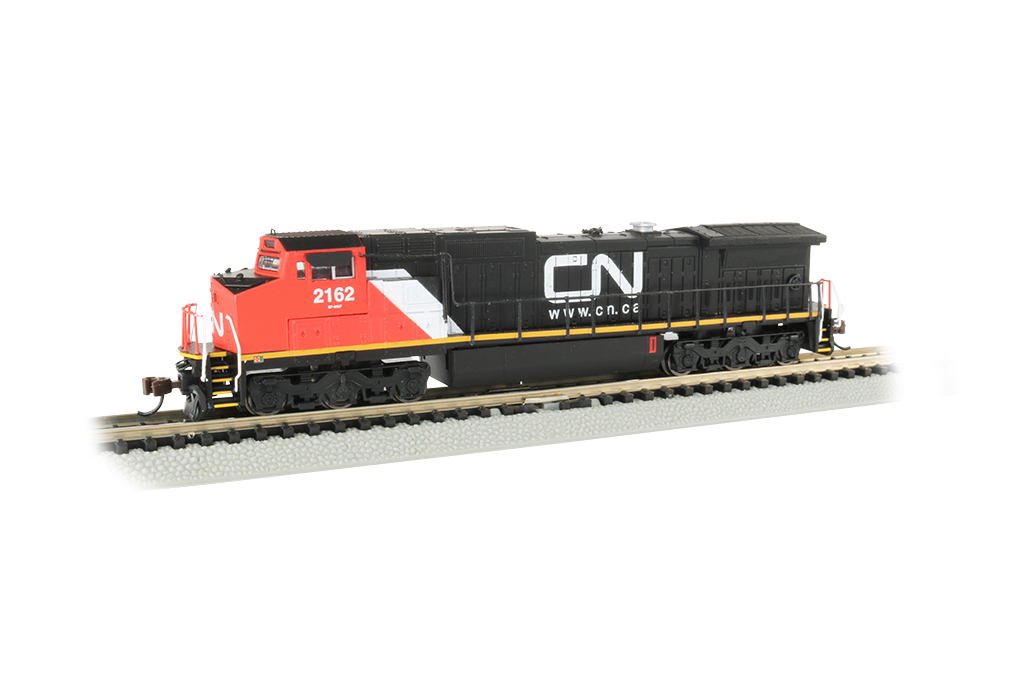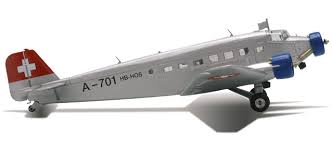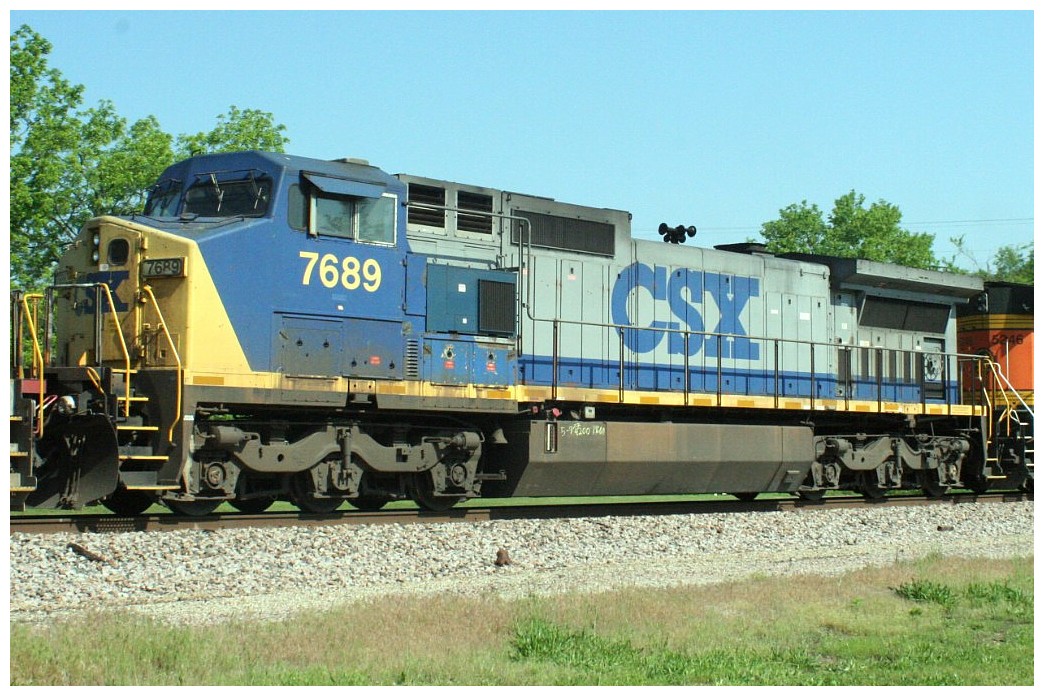Model Information: Bachmann introduced this model in 1996 and then revised it in 2003 (8-40CW) and 2004 (8-40C). The models come in two varieties: Dash 8-40C and Dash 8-40CW. The Dash 8-40CW was revised in 2018 and released with DCC & sound.
Original Retail Price of the 2003-04 version: $135
Be careful if you want to acquire one, as the versions are very different. The 8-40C have been re-released in 2004 with the same stock number and same road names & numbers as in 1996; the 8-40CW have re-released in 2003 with different road numbers or with different stock numbers than the 1996 release:
Original Retail Price of the 2003-04 version: $135
Be careful if you want to acquire one, as the versions are very different. The 8-40C have been re-released in 2004 with the same stock number and same road names & numbers as in 1996; the 8-40CW have re-released in 2003 with different road numbers or with different stock numbers than the 1996 release:
- The main visual difference between the 1996 and 2003-04 versions are the couplers: truck-mounted in 1996 (no pilot), body-mounted in 2004. The handrails are also thinner on the 2003-04 version. The 2004 Dash 8-40C has sun shades that were missing on the 1996 version. Inside, the mechanism is totally different with the 2003-04 version being a much better runner.
- The 1996 packaging is a box with foam, a transparent hinged cover with inscription 'On the leading edge of technology, Spectrum, The master Railroader Series from Bachmann', in a white carboard sleeve with a gold tag on it. The handrails came unmounted.
- The 2003-04 packing a more modern jewel case box with a plastic cradle, and label on the side.
DCC Information:
1996 version: no DCC support
2003-04 version: DCC Friendly (but not plug-and-play)
2018 version: factory-equipped DCC & Sound (Soundtraxx Econami)
1996 version: no DCC support
2003-04 version: DCC Friendly (but not plug-and-play)
2018 version: factory-equipped DCC & Sound (Soundtraxx Econami)
Prototype History: The Dash 8 Series is a line of diesel-electric freight locomotives built by GE Transportation Systems. It replaced the Dash 7 Series in the mid-1980s, and was superseded by the Dash 9 Series in the mid-1990s. All models of the Dash 8 Series are powered by a 16- or 12-cylinder, turbocharged, GE 7FDL 4-stroke diesel engine.
The design of the Dash 8 Series is based upon that of the Dash 7 Series. The biggest changes introduced during the production of the Dash 8 Series were the first use of a microprocessor-equipped engine control unit in a diesel locomotive, and the adoption of a modular system in the construction of the vehicle body. The Dash 8 locomotive bodies were assembled from several modules, creating a combination to fit the length of the chassis. On models with a traditional narrow short hood, the part of the equipment room immediately behind the cab is taller than the top of the rounded cab roof, giving those models a distinctive appearance. On all models, that part of the equipment room houses the cooling fans for the dynamic braking system. Traction motors of Dash 8 locomotives were powered by direct current.
The "W" suffix used for some models indicates the then-optional wide-nose "North American" safety cab.
The GE Dash 8-32BHW (or Dash 8-32BWH) is a variant built with Head End Power (HEP) and a wide cab for Amtrak service.
From Wikipedia
More on Dash 8-32B on American-Rails.com
The design of the Dash 8 Series is based upon that of the Dash 7 Series. The biggest changes introduced during the production of the Dash 8 Series were the first use of a microprocessor-equipped engine control unit in a diesel locomotive, and the adoption of a modular system in the construction of the vehicle body. The Dash 8 locomotive bodies were assembled from several modules, creating a combination to fit the length of the chassis. On models with a traditional narrow short hood, the part of the equipment room immediately behind the cab is taller than the top of the rounded cab roof, giving those models a distinctive appearance. On all models, that part of the equipment room houses the cooling fans for the dynamic braking system. Traction motors of Dash 8 locomotives were powered by direct current.
The "W" suffix used for some models indicates the then-optional wide-nose "North American" safety cab.
The GE Dash 8-32BHW (or Dash 8-32BWH) is a variant built with Head End Power (HEP) and a wide cab for Amtrak service.
From Wikipedia
More on Dash 8-32B on American-Rails.com
Road Name History: The Canadian National Railway Company (reporting mark CN) is a Canadian Class I railway headquartered in Montreal, Quebec that serves Canada and the Midwestern and Southern United States. CN's slogan is "North America's Railroad". CN is a public company with 24,000 employees. It had a market capitalization of 32 billion CAD in 2011. CN was government-owned, having been a Canadian Crown corporation from its founding to its privatization in 1995. Bill Gates was, in 2011, the largest single shareholder of CN stock.
CN is the largest railway in Canada, in terms of both revenue and the physical size of its rail network, and is currently Canada's only transcontinental railway company, spanning Canada from the Atlantic coast in Nova Scotia to the Pacific coast in British Columbia. Its range once reached across the island of Newfoundland until 1988, when the Newfoundland Railway was abandoned.
Following CN's purchase of Illinois Central (IC) and a number of smaller US railways, it also has extensive trackage in the central United States along the Mississippi River valley from the Great Lakes to the Gulf of Mexico. Today, CN owns about 20,400 route miles (32,831 km) of track in 8 provinces (the only two not served by CN are Newfoundland & Labrador and Prince Edward Island), as well as a 70-mile (113 km) stretch of track (see Mackenzie Northern Railway) into the Northwest Territories to Hay River on the southern shore of Great Slave Lake; it is the northernmost rail line anywhere within the North American Rail Network, as far north as Anchorage, Alaska (although the Alaska Railroad goes further north than this, it is isolated from the rest of the rail network).
The railway was referred to as the Canadian National Railways (CNR) between 1918 and 1960, and as Canadian National/Canadien National (CN) from 1960 to the present.
Read more on Wikipedia.
CN is the largest railway in Canada, in terms of both revenue and the physical size of its rail network, and is currently Canada's only transcontinental railway company, spanning Canada from the Atlantic coast in Nova Scotia to the Pacific coast in British Columbia. Its range once reached across the island of Newfoundland until 1988, when the Newfoundland Railway was abandoned.
Following CN's purchase of Illinois Central (IC) and a number of smaller US railways, it also has extensive trackage in the central United States along the Mississippi River valley from the Great Lakes to the Gulf of Mexico. Today, CN owns about 20,400 route miles (32,831 km) of track in 8 provinces (the only two not served by CN are Newfoundland & Labrador and Prince Edward Island), as well as a 70-mile (113 km) stretch of track (see Mackenzie Northern Railway) into the Northwest Territories to Hay River on the southern shore of Great Slave Lake; it is the northernmost rail line anywhere within the North American Rail Network, as far north as Anchorage, Alaska (although the Alaska Railroad goes further north than this, it is isolated from the rest of the rail network).
The railway was referred to as the Canadian National Railways (CNR) between 1918 and 1960, and as Canadian National/Canadien National (CN) from 1960 to the present.
Read more on Wikipedia.
Brand/Importer Information: Bachmann Industries (Bachmann Brothers, Inc.) is a Bermuda registered Chinese owned company, globally headquartered in Hong Kong; specializing in model railroading.
Founded in Philadelphia, Pennsylvania, the home of its North American headquarters, Bachmann is today part of the Kader group, who model products are made at a Chinese Government joint-venture plant in Dongguan, China. Bachmann's brand is the largest seller, in terms of volume, of model trains in the world. Bachmann primarily specializes in entry level train sets, and premium offerings in many scales. The Spectrum line is the high quality, model railroad product line, offered in N, HO, Large Scale, On30, and Williams O gauge all aimed for the hobbyist market. Bachmann is the producer of the famous railroad village product line known as "Plasticville." The turnover for Bachmann model trains for the year ended 31 December 2006 was approximately $46.87 million, a slight increase of 3.36% as compared to 2005.
Founded in Philadelphia, Pennsylvania, the home of its North American headquarters, Bachmann is today part of the Kader group, who model products are made at a Chinese Government joint-venture plant in Dongguan, China. Bachmann's brand is the largest seller, in terms of volume, of model trains in the world. Bachmann primarily specializes in entry level train sets, and premium offerings in many scales. The Spectrum line is the high quality, model railroad product line, offered in N, HO, Large Scale, On30, and Williams O gauge all aimed for the hobbyist market. Bachmann is the producer of the famous railroad village product line known as "Plasticville." The turnover for Bachmann model trains for the year ended 31 December 2006 was approximately $46.87 million, a slight increase of 3.36% as compared to 2005.
Item created by: Jenna on 2018-07-11 13:58:45. Last edited by CNW400 on 2020-05-13 17:28:17
If you see errors or missing data in this entry, please feel free to log in and edit it. Anyone with a Gmail account can log in instantly.
If you see errors or missing data in this entry, please feel free to log in and edit it. Anyone with a Gmail account can log in instantly.









